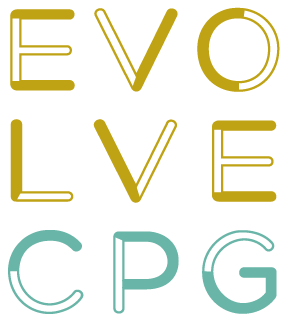Defining Better for the World with Gage Mitchell of Modern Species
We spend a lot of time talking about better-for-the-world products, brands, and businesses. But what does that really mean? During our milestone episode, we are reflecting on the types of advice and stories that are shared on the show by guests who are working to do better in different ways.
We take a detailed look at what it means for purpose-driven brands to be committed to better for the world. We also explore real-world examples of industry leaders who are successfully infusing business strategy with their values before touching on the role of supportive policies in encouraging more businesses to become better for the world. Tune in today to hear all this and more!
Key Points From This Episode:
A three-layered consideration for defining what it means to do better for the world.
The relationship between how, why, and what.
Gage’s four layers of better: purpose, sustainability and responsibility, outcomes, and measurable impact.
What it means for purpose-driven brands to serve others in a meaningful way.
Identifying real-world problems and testing solutions.
Clearly defining your values and principles to move forward with integrity.
Passion and commitment as illustrated by Seth Goldman.
The main idea of sustainability: considering the future.
Organic and regenerative agricultural practices.
How Sandra Ann Harris enacts upcycling this at ECOLunchbox.
What constitutes upcycling and why it has a positive impact.
Carbon neutral and net zero or net positive practices.
The ideal waste and pollution status of better for the world companies.
What it means for brands to care for others.
Five considerations for social responsibility: justice, equity, diversity, and inclusion.
Distinguishing between equality and equity.
What it means to have Worker First benefits and policies.
Good governance and its far-reaching implications.
Five pillars of social impact and what they mean.
What non-profit organizations need beyond another check.
The far-reaching implications of changing policy in favor of better for the world businesses.
Leveraging collaboration as a better for the world business.
Distilling what better-for-the-world businesses aim for into measurable categories.
Understanding and leveraging your buying power and your actions as a consumer.
What the show aims to contribute to shifting mindsets.
Tweetables:
“Better for the world brands exist for a reason. They’re not just a way to make some money. They’re not just filling a gap in the market. There’s a real purpose behind these companies.” — Gage Mitchell [0:06:42]
“Purpose-driven, better-for-the-world companies are usually out to serve others in some meaningful way.” — Gage Mitchell [0:07:38]
“Brands who are trying to be better for the world are trying to benefit others, they are working to solve a real-world problem, they have a clear mission and vision and align to them with integrity, and they’re passionate and committed.” — Gage Mitchell [0:11:38]
“Sometimes what non-profits or causes need isn’t just another check, or attention, or for you to share a post. Sometimes they need physical boots on the ground and hands in the soil.” — Gage Mitchell [0:29:42]
“The more we can get policies changed in favor of better for the world business, the more likely it is that every business will become a better-for-the-world business.” — Gage Mitchell [0:31:33]
Check Out Products We’ve Featured…
-
Beauty and Personal Care
- Sep 20, 2022 Soapbox
- Jun 23, 2021 Makes 3 Organics
-
Durable Goods
- Apr 19, 2022 Dtocs
- Jan 26, 2021 ECOlunchbox
-
Food and Beverage
- Apr 28, 2023 Good Food for Good
- Apr 13, 2023 Alec’s Ice Cream
- Mar 28, 2023 Redmond
- Mar 21, 2023 Read The Ingredients
- Mar 8, 2023 Forij
- Feb 23, 2023 Wild Orchard Teas
- Feb 20, 2023 Firebrand Artisan
- Feb 3, 2023 Bundle x Joy
- Feb 3, 2023 Lexington Bakes
- Dec 12, 2022 Eat The Change
- Dec 12, 2022 Humble Snacks
- Oct 22, 2022 Renewal Mill
- Oct 22, 2022 IWON Organics
- Oct 14, 2022 Bro Dough
- Oct 14, 2022 Once Upon a Farm
- Sep 20, 2022 Soom Foods
- Sep 20, 2022 Pacha
- Aug 17, 2022 Freak Flag Organics
- Jul 31, 2022 No Evil Foods
- Jun 2, 2022 Philosopher Foods
- May 20, 2022 Pulp Pantry
- May 18, 2022 Betterbrand
- Apr 19, 2022 Pass The Honey
- Apr 19, 2022 Boxed Water is Better
- Mar 18, 2022 Take Two
- Mar 18, 2022 Javazen
- Mar 18, 2022 Mid-Day Squares
- Mar 18, 2022 Ready Wise
- Dec 13, 2021 Agua Bonita
- Dec 13, 2021 Thomas Foods
- Dec 10, 2021 Farmer Direct Organic
- Dec 10, 2021 Manitoba Harvest
- Oct 27, 2021 ZEGO Foods
- Oct 13, 2021 Riff
- Sep 29, 2021 Doughp
- Jul 14, 2021 Outcast Foods
- May 19, 2021 Hippie Snacks
- Feb 24, 2021 Alter Eco
- Feb 11, 2021 Hooray Foods
- Feb 6, 2021 ReGrained
-
Household
- Sep 1, 2021 Thriving Design
